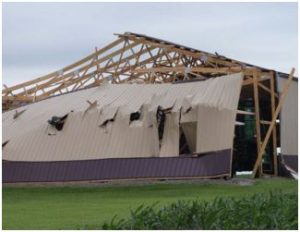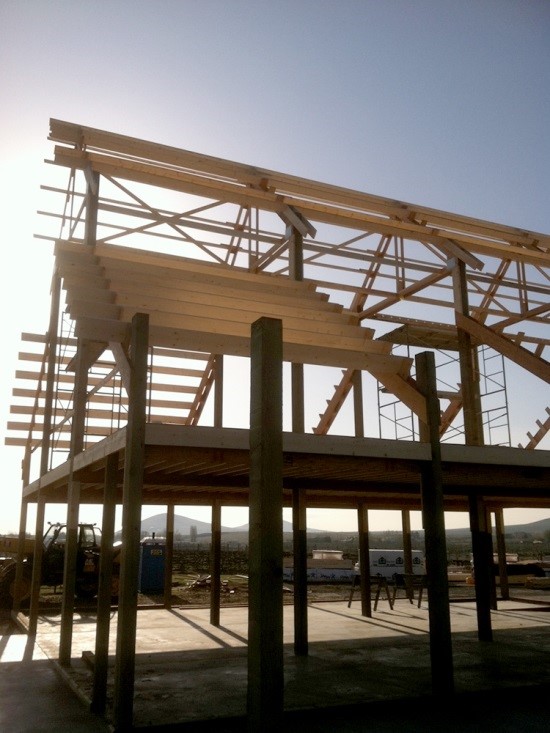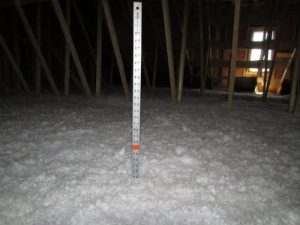WIND EXPOSURE & CONFUSION – Part Deux
For those of you who needed an energy drink to survive Part I….
To get the information needed, glance over IBC Section 1609.4.2‐‐Surface Roughness Categories. “A ground surface roughness within each 45-degree sector shall be determined for a distance upwind of the site as defined in Section 1609.4.3 from the following categories, for the purpose of assigning an exposure category as defined in Section 1609.4.3.”
1) Surface roughness B: “Urban and suburban areas, wooded areas or other terrain with numerous closely spaced obstructions having the size of single-family dwellings of single-family dwellings or larger.”
2) Surface roughness C: “Open terrain with scattered obstructions having heights generally less than 30 feet. This category includes flat open country and grasslands.”
3) Surface roughness D: “Flat, unobstructed areas and water surfaces. This category includes smooth mud flats, salt flats and unbroken ice.”
Hold on, we still haven’t determined what our Exposure Category is.
In IBC Section 1609.4.3‐‐Exposure Categories, we finally get information we want. Exposure is based on roughness determined earlier and once again broken into Categories B, C, or D:
1) IBC Exposure B: “For buildings with a mean roof height of less than or equal to 30 feet, Exposure B shall apply where the ground surface roughness, as defined by Surface Roughness B, prevails in the upwind direction for a distance of not less than 1,500 feet. For buildings with a mean roof height greater than 30 feet, Exposure B shall apply where Surface Roughness B
prevails in the upward direction for a distance of not less than 2,600 feet or 20 times the height of the building, whichever is greater.”
 Surface roughness B = Exposure B with these restrictions:
Surface roughness B = Exposure B with these restrictions:
a) Roughness B prevails upwind for greater of at least 2,600 feet or 20 times mean roof height
b) If mean roof height is 30 feet or less, upwind distance is reduced to 1,500 feet
IRC Exposure B: “Urban and suburban areas, wooded areas or other terrain with numerous closely spaced obstructions having the size of single family dwellings or larger. Exposure B shall be assumed unless the site meets the definition of another type exposure.”
2) IBC Exposure C: “Exposure C shall apply for all cases where Exposure B or D does not apply.”
IRC Exposure C: “Open terrain with scattered obstructions, including surface undulations or other irregularities, having heights generally less than 30 feet extending more than 1,500 feet from the building site in any quadrant. This exposure shall apply to any building located within Exposure B type terrain where the building is directly adjacent to open areas of Exposure C type
terrain in any quadrant for a distance of more than 600 feet. This category includes flat, open country and grasslands.”
3) Exposure D: “Exposure D shall apply where the ground surface roughness, as defined by Surface Roughness D, prevails in the upwind direction for a distance of not less than 5.000 feet or 20 times the height of the building, whichever is greater. Exposure D shall apply when the ground surface roughness immediately upwind of the site is B or C, and the site is within a
distance of 600 feet or 20 times the building height, whichever is greater, from an Exposure D condition as defined in the previous sentence.”
IRC Exposure D: “Flat, unobstructed areas exposed to wind flowing over open water, smooth mud flats, salt flats and unbroken ice for a distance of not less than 5,000 feet. This exposure shall apply only to those buildings and other structures exposed to the wind coming from over the unobstructed area. Exposure D extends downwind from the edge of the unobstructed area a
distance of 600 feet or 20 times the height of the building or structure, whichever is greater.”
Surface roughness D = Exposure D with these restrictions:
a) Roughness D prevails upwind for greater of at least 5,000 feet or 20 times building height
b) Exposure D extends inland from a shoreline greater of 600 feet or 20 times building height
Is choosing an Exposure Category now clear? If not, as a generality, roughness = exposure.
Memorizing all details isn’t necessary, but being able to recognize these letters is probably a good idea.
In my next article, I will give a Reader’s Digest version of how to determine Wind Exposure.










“In my next article, I will give a Reader’s Digest version of how to determine Wind Exposure.”
Hallelujah…..although I already have a headache. 😉
I know – Building Codes can be brutal to wade through 🙁